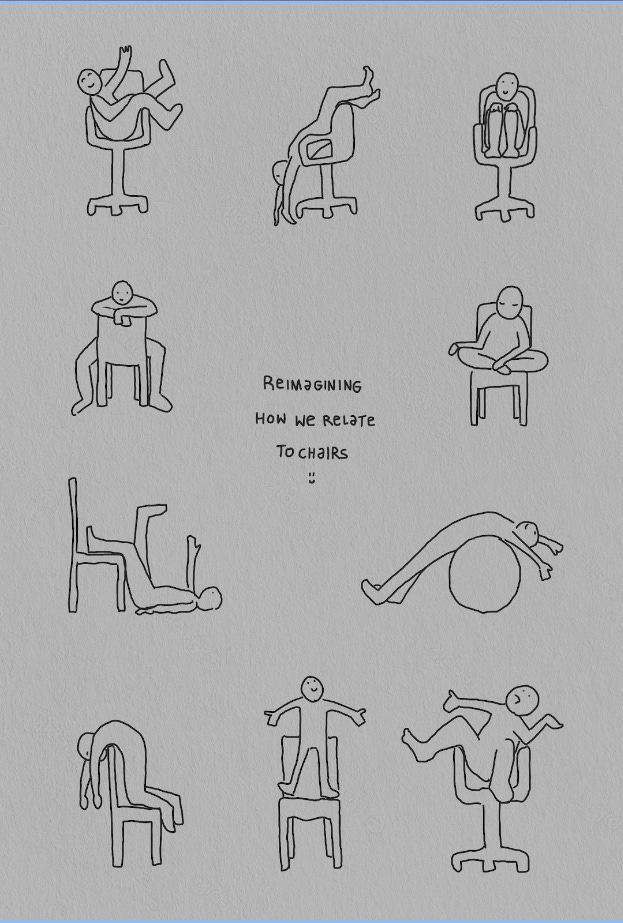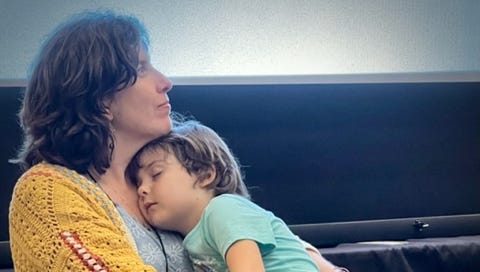Field Notes are small snippets of enchanting moments of everyday life, enchantment from the field. They are enchantment research, or (re)enchanting research, or (re)searching enchantment. They are an entanglement of observations, intuition, and messages from deep listening. They are curiosities and wonder/ings.
Research, which is fundamentally about following curiosity, can become disenchanted, overly formalized and sterilized, placed on a pedestal, removed from life. We are all researching all the time, and we can all be researchers. (Re)enchanting research is a call to return research to our everyday lives and to follow our wonder, curiosity, questions, and awe, to listen deeply to our intuition and messages that arise when we get quiet enough to hear. These field notes are an experiment and I invite you to join me in (re)enchanting research.
This past week I simultaneously participated in the Re-Imagining Education 3.0 conference (online) and the Association for Applied and Therapeutic Humor conference (in person in Mesa, AZ). At REC, I presented on the Ecoversities Publications Panel about the piece I wrote about my dissertation last year (the session was recorded and I will share when it becomes available!). At AATH, I was there mostly to be with our Jill Knox Peace Through Humor Fellows and to present a Peace Through Humor Panel with our second year fellows (more on this later).
Some things I am still thinking about after the conferences are:
Naming what’s happening often helps. It is usually not enough by itself, but it is a start.
Doing something you do habitually - like sitting - in a different way is a pathway to enchantment and thinking-feeling differently.
What do I want to teach?
Elaborations
Naming what’s happening often helps. It is usually not enough by itself, but it is a start.
In the opening morning plenary, a rupture happened. I was not present, but I heard about it. To open our panel in the afternoon, I named that a rupture had happened. After our panel, someone approached me to thank me and said, “My favorite part of what you shared was that you named what happened earlier. No one else all day had done that.”
To be clear, I wasn’t present in the session earlier when a rupture had occurred. But I had heard from a number of people that a rupture had happened, that some people felt harmed by something a speaker had said, and the tension and harm was palpable in the air. As I opened our session about building peace through humor, I just named that a rupture had occurred earlier, and that I was not present for it, but I felt it rippling through the conference. People were talking about it. And that I still didn’t have a good sense of what had happened because everyone I spoke to told the story in slightly different way, which illustrated how we each have a different view point in a conflict, based on our physical and social locations and positionalities, lived experience, cultural background and many other factors, especially those related to power and privilege.
I think it’s important, when naming, to always include that it is from our perspective, or “I’m sensing that there is tension in the air from what happened in the earlier session.” It may not be true for everyone, and people may (and probably will) feel differently about what they heard, saw, experienced. But naming is a doorway. It’s a pathway towards the possibilities for what the rupture opened - for healing, for reconciliation, for learning.
Naming helps. It’s not enough on it’s own, and more care, attention, and processes are often needed once something is named (“Now what?”), but naming - naming tension, naming what is present, naming what is happening - is a start.
As the great James Baldwin said, “Not everything that is faced can be changed, but nothing can be changed until it is faced.”
Naming is a part of facing. Through naming, facing and changing become possible. Even (perhaps especially) when we might not know what to do, we can still name.Doing something you do habitually in a different way is a pathway to enchantment and thinking-feeling differently.
In this case, that something was sitting, at our desks, in our Zoom space:
This drawing came from our collective REC harvest journal, artist unknown. When I find out I will add their name! During the REC opening ceremony, Catarina Rosa shared a playful exercise with us, simply inviting us to sit in our chair differently than we usually do. She asked us to put our feet on the chair, to face the back of the chair, to put our legs over the arms, and just experiment with how we might sit in the chair.
What surprised me was how, for the rest of the conference, it made me very aware of how I was sitting, and made me think about whether that was how I wanted to be sitting. It invited me to try sitting in different ways, and in sitting in different ways, I found myself feeling different, feeling more playful and curious, questioning. Seeing differently.
I invite you to try it now. Can you sit in some way that’s different from how you’re currently sitting? Play with it. How does it make you feel? Does it open anything up for you?What do you want to teach?
In a session on redesigning universities at REC, Gaell Mainguy from Learning Planet Institute talked about the Japanese concept of ikigai, about finding purpose and meaning in your life. The concept was popularized through the book Ikigai: The Japanese Secret to a Long and Healthy Life by Hector Garcia and Francesco Miralles. The authors describe ikigai as the intersection of what the world needs, what you are good at, what you love, and what you can be paid for. Gaell suggested that one way to redesign universities is to reconnect professors to their own ikigai and ask them what they want to teach.
What do I want to teach?
This is a question I am taking into my “summer” (non-teaching months; summer in quotes because we are in summer now and on the verge of rainy season here in Costa Rica). I got to teach so much of what I love to teach this year - especially peace education and nonviolent movements - and got to teach some new things (like gender and media) as well, which allowed me to learn a lot and also affirmed that anything can be taught in a peace education orientation (perhaps more on this another time). I was very connected with this question as I finished my PhD last year, and then dove into this new role. As I prepare to take a deep exhale as the academic year winds down, I am pondering this. If I could teach anything, what would I want to teach?
What do you want to teach? I invite you to join me in that question, or, if you have things that you would love for me to teach, let me know in the comments or reach out!
As you probably know by now, dear reader, I like to close by offering invitations to join me in reflection. They have been interspersed throughout, but to summarize:
What can you name (that is happening, present, etc.) right now that would be helpful, even if it is just to yourself?
How can you play with sitting right now?
What do you want to teach?
What would you like me to teach?
What enchantable moments are you noticing in your life these days? What has enchanted you this week?
I am off to watch the sunset - one of my favorite forms of daily enchantment - and to go be enchanted by the full moon. Happy full moon lunar eclipse! May it be a powerful moment of rest, nourishment, enchantment, and receiving the messages you need to hear right now, in this moment :)





